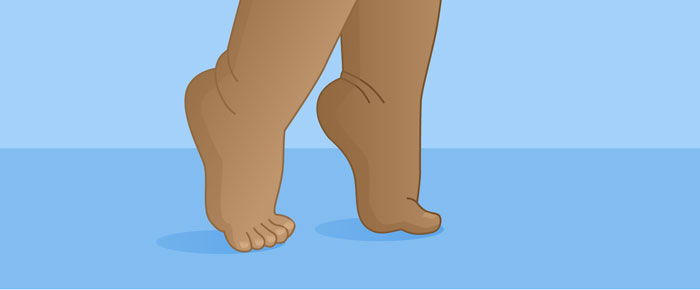Why Toe Walking Is NOT Idiopathic

For far too long, therapists and physicians have been getting it all wrong when it comes to toe walking in children! The cause is not short muscles; the solution is not stretching. It is not idiopathic and there is a reason… we just haven’t looked in the right places!
Toe walking is not a foot or ankle problem – it’s a movement disorder. So, “tight heel cords” are merely a symptom of a pathological movement pattern. Decreased muscle length is actually the result of toe walking, instead of the cause. Traditional interventions – such as serial casting, orthoses, Botox, surgery, and stretching – only focus on symptomatic treatment. The reality is that multiple body systems are involved in walking and they all require consideration. If all the impaired systems aren’t effectively addressed, the likelihood of long-term resolution is low.
Why Aren’t Traditional Interventions Working?
Each of the conventional approaches has some problems:
- Serial casting causes weakness and fatigue resulting in further dysfunction
- Orthotics often do not address correct biomechanics and restrict joint function
- Botox limits motor training potential
- Surgery causes additional soft tissue immobility
- Stretching does not improve muscle function
What Is Missing?
In the traditional approaches, some important factors are left out of the picture:
- Postural control – necessary for optimal balance
- Base of support – essential to rehabilitate gait
- Correct lower extremity alignment – crucial for long term resolution
- Contributions of 3 primary body systems – vestibular, visual, and proprioceptive
- Reflexes – often retained in children who toe walk
Both families and therapists are often disappointed with treatment outcomes for toe walkers. It is common to have poor results and even a return of the toe walking after a few months. There is, however, a different way to assess and intervene with the condition – a way that makes sense of why the child is toe walking! It looks beyond the “tight heel cords” and examines how all the above factors contribute to this movement disorder.
- Hirsh G, Wagner B. The natural history of idiopathic toe walking: a long term follow up of 14 conservatively treated children. Acta Paediatr. 2004;93: 196–199.
- Bent LR, Inglis JT & McFadyen BJ. When is Vestibular Information Important During Walking? Journal of Neurophysiology.
- Yaguramaki N & Kimura T: Acquirement of Stability and Mobility in Infant Gait. Gait & Posture. 2002:16(1): 69-77.
- RM Kay et al. Toxin As An Adjunct To Serial Casting Treatment In Children With Cerebral Palsy. The Journal of Bone & Joint Surgery. 2004 Nov;(86:11): 2377-2384.
- Dietz FR, Albright JC & Dolan L. Medium Term Follow Up of Achilles Tendon Lengthening in the Treatment of Ankle Equines in Cerebral Palsy. The Iowa Orthopaedic Journal. 2006;26:27-32.
- Lewkowicz D J & Lickliter R. Dynamic Systems Approach to the Development of Cognition and Action. Journal of Cognitive Neuroscience. 1995.









